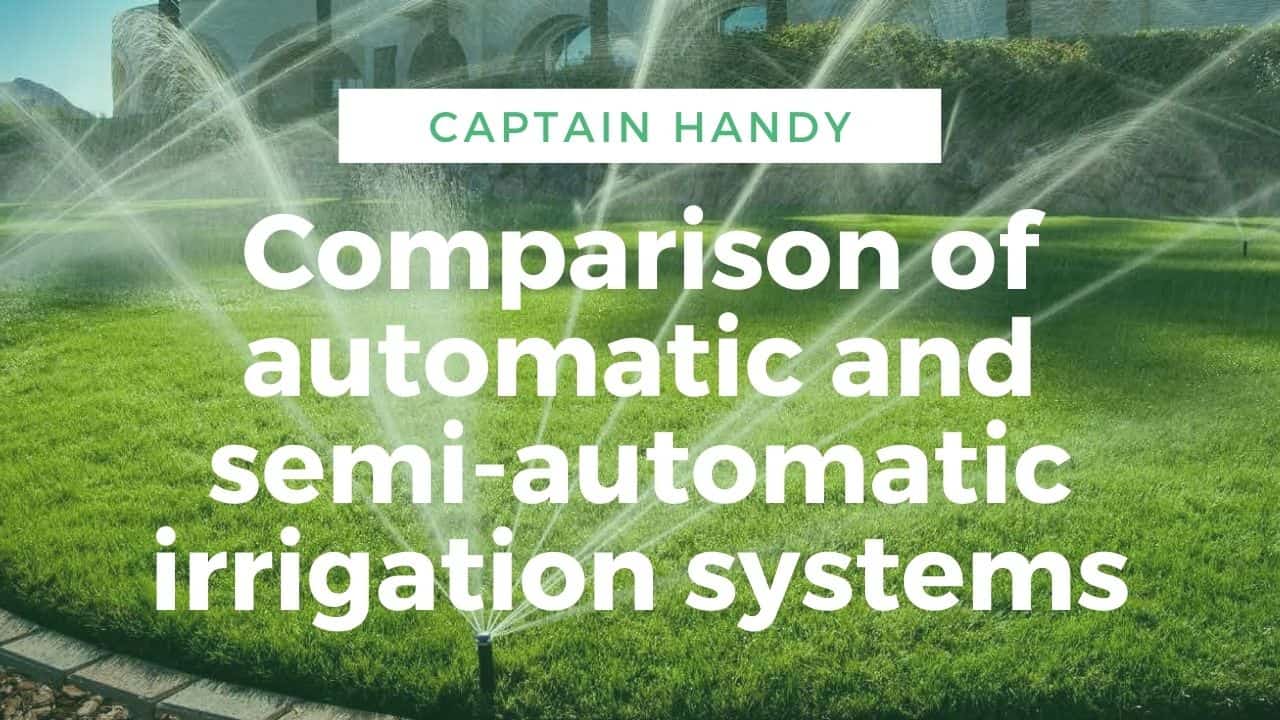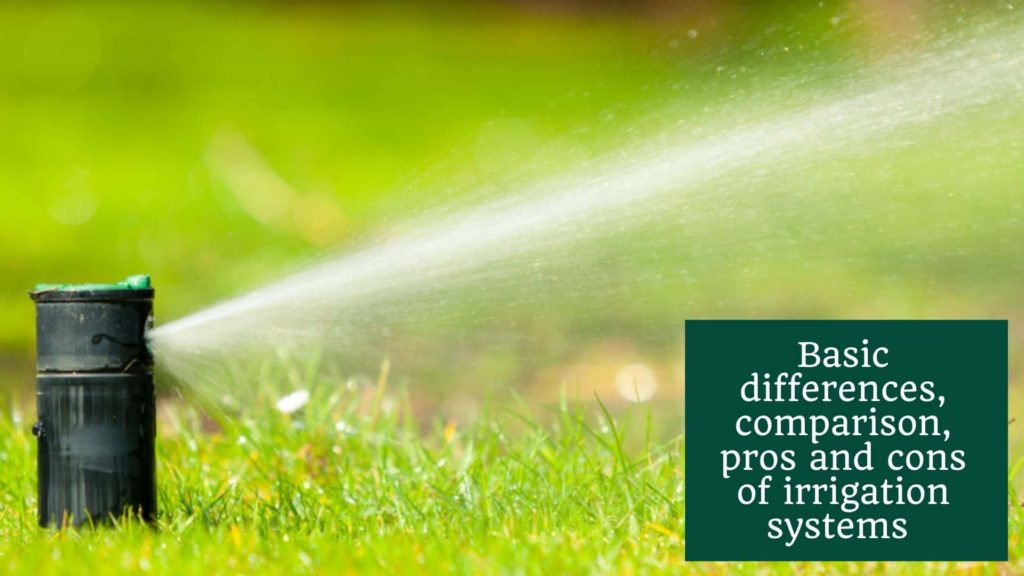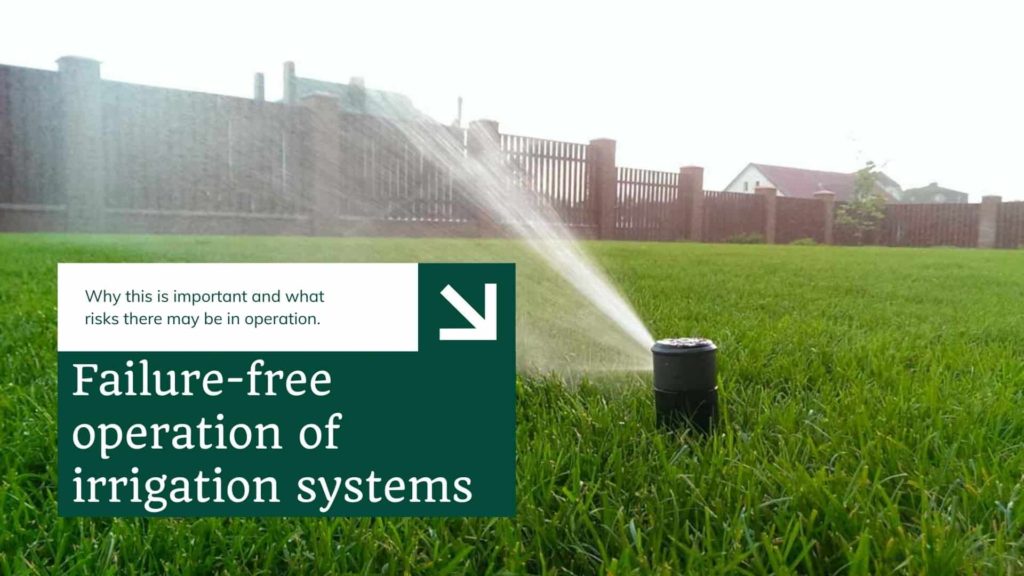
Basic differences, comparison, pros and cons of irrigation systems in Toronto.
The irrigation system offered by Captain Handy realizes the watering of plants in two main ways: overhead irrigation system and drip irrigation.
The entire plot is divided into watering zones. Each zone can have one of the two watering methods and its own schedule, which is necessary for optimal watering of the plants that grow in that zone.
The irrigation system can be automatic or semi-automatic:
A semi-automatic irrigation system is controlled by taps installed on each irrigation zone. The taps are manually operated and a person is needed to follow the watering schedule of the zones and to open the tap at a designated time and close the tap after a designated time.
When the faucet is opened, the water pressure in the mainline drops, and the pump turns on. It maintains the water pressure in the pipes. This pressure is used to actuate all the actuators needed for irrigation. Sprinkler rods are lifted from the ground, nozzles are turned to the desired sector, water is filtered, and pressure reducers are actuated.
A semi-automatic system does not use electronics, weather sensors, or electrically controlled valves. This undoubtedly leads to lower cost of the entire irrigation system and increased reliability, as there are fewer components that can fail.

The main disadvantage of this semi-automatic system, however, is the human factor. A person must be present at all times to monitor the filling of the storage tanks, pump operation, pressure in the system, weather conditions, and watering schedules. At the same time do not forget to open taps in time and, just as importantly, close them in time, because overwatering for plants is as harmful as lack of moisture.
The automatic system is equipped with an electronic control unit – the auto irrigation controller. Electrically controlled valves and various sensors.
The automatic system is more expensive than the semi-automatic is its main disadvantage. An automatic irrigation controller takes care of all routine functions, which are the responsibility of man in the case of a semi-automatic system. The automatic opens and closes the valves. The controller monitors the moisture and temperature of the soil; if it rains, watering is reduced or canceled altogether.
Тhe irrigation schedule is automatically adjusted to seasonal variations in average daily temperature. Therefore, human involvement is kept to a minimum. Usually, it is only necessary to make small adjustments to the irrigation schedule 2-3 times per season.
Failure-free operation of irrigation systems

Equally important is trouble-free operation. The Captain Handy irrigation controllers pay a lot of attention to this. The fact is that the irrigation system is an engineering system that serves the benefit of man, but sometimes it can cause harm. The irrigation system usually stores a large amount of water in storage tanks of 3000-5000 liters, or water is supplied from the water utility. A powerful pump is used, which creates a lot of pressure and has a fairly decent capacity.
Let’s consider a hypothetical situation: one night in a corner of the site for some reason there is a depressurization or burst the main pipe. The main pipe is usually installed with 32-40 mm pipe, the flow rate of which can be up to 4-5m³ water per hour. The pressure in this pipe is 5 atm. What will happen in a semi-automatic system: the pump will work continuously and unsuccessfully, trying to create pressure in the main. After about an hour, the entire 5,000 liter supply of water from the storage tanks, or an even larger volume if a central water supply line is used, will be poured out under pressure into a single point of the garden plot.
The consequences of this event can be very disastrous not only for the plants and landscape but also for the capital structures located near the accident point. A man may not have time to react in such a short time. The automatic system will not allow the accident to happen. The controller sees a sudden pressure drop and if it happens when there is no irrigation, the pump is blocked and an alarm is sent to the dispatcher.
Another situation that a less experienced semi-automatic irrigation system user may not even feel is that the filters are partially clogged. During irrigation, the pump can not create enough pressure for normal and quality irrigation of the area. The controller sees this and sends a message to the dispatcher.
Another situation is when the containers run out of water during irrigation. A person probably won’t notice it right away, but the dispenser will work quickly and reliably.
The best time to water is in the late evening, at night, or early morning hours of 4-6 am. No one will want to turn on the taps at that time, and the dispenser does not mind it here either.
The advantages of an automatic system are many, but there is another disadvantage worth mentioning, which is overall reliability. Electronics can fail, yes they can. No one is immune to that. Sometimes everything breaks down: computers, phones, televisions any household, and even industrial electronics. The automatic system is not deprived of this flaw either.
In this case, there is a way out: the automatic system can be switched to the semi-automatic mode for the period of repair. The pump can be switched on and off manually, independent of the controller. The solenoid valves can also easily be unlocked and the water can be supplied to the zone bypassing the electrical signal from the controller.
